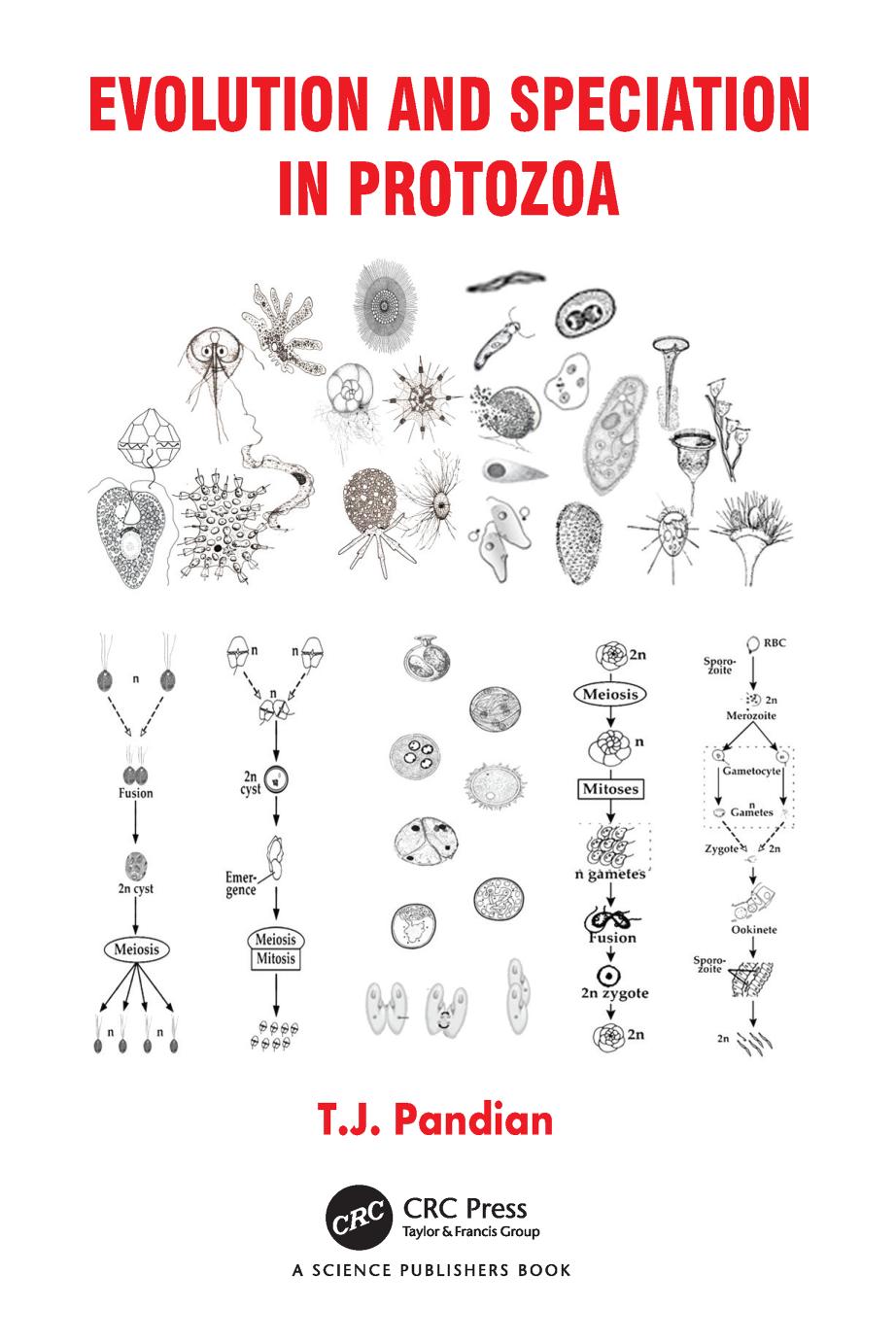Product desciption
Evolution And Speciation In Protozoa Tj Pandian by T.j. Pandian 9781032347516, 9781032347561, 9781003323716, 1032347511, 1032347562, 1003323715, B0BRQW96LP instant download after payment.
The polyphyletic Protozoa have explored the possibility of performing almost all metazoan functions with a few subcellular organelles. Their unicellularity and structural simplicity have (i) limited diversity to 32,950 species, (ii) restricted spatial distribution to aquatic habitats (94%, against 15% in Metazoa), (iii) demonstrated the ubiquitous dominance of clonality, (iv) reduced sexualization in 50% species, (v) facilitated the use of vegetative gametes in 40% species and (vi) secondary loss of sex in 10% species. With the fastest multiplication rates, i.e. once every 6-60 hours, they occur in high densities of 105-106 cell/ml. Their diverse and complicated life cycles are described in 30 types. Being risky, the cycle involves two hosts in < 2,000 parasitic species and injective transmission mode by sanguivorous insects and ticks in < 300 species. Their radial symmetry has accelerated diversity more than in radially symmetric less speciose Porifera (8,553 species), Cnidaria (10,856) and Echinodermata (7,000). In them, diversity is decelerated in the following descending order: symmetry > clonality > hermaphroditism > motility. Motility ranges from 2-3 μm for Rhizopoda to 400-2,000 μm for Ciliophora. Not surprisingly, 6,800 species of arcellinids, filosians and formainifers are testated or shelled. Within 1,229 sessile species, the peritrichid and suctorian ciliates are better adapted to coloniality. Unlike those of many Metazoa, the protozoan cyst is a dynamic stage, in which clonal or sexual reproduction occurs. Over 81% protozoans encyst, as it ensures (i) 90% survival during unfavorable conditions (against 15 in 12% non-encysted protozoans), (ii) genome transfer through generations, (iii) dispersal into new habitats and (iv) transmission to new hosts. Their mean body size ranges from 2 μm to 2 mm – a range over 1,000-times – only 8% aquatic metazoans cover a similar size range. In comparison to 77% macrophagy in Metazoa, only 46% protozoans are macrophagous predators. Within motile microphagy, protozoans filter 3-2 times smaller food particle at 50% cheaper clearance cost. This efficiency has expanded microphagy to 15% in protozoans, against 3% in Metazoa. Hence, their turnover rate in trophic dynamics is twice faster than that of metazoans. Foraminifers serve as ecological sensitive indicators in petroleum exploration and rise in sea level. For the first time, incidences of clonality and meiosis as well as symbiosis and parasitism have been shown to hint at the origin and evolution of different protozoan taxonomic groups during the geological past. The polyphyletic Protozoa have explored the possibility of performing almost all metazoan functions with a few subcellular organelles.


